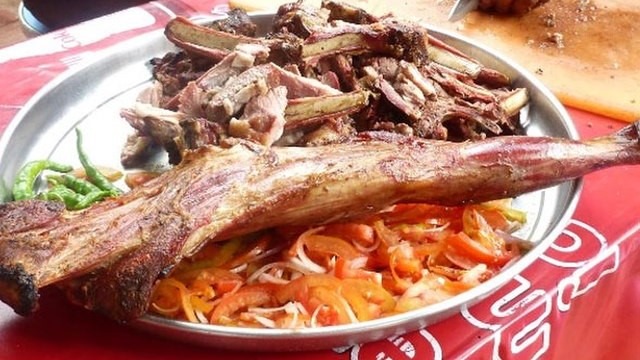On a crowded Nairobi street, the aroma of grilled meat rises into the evening air, mingling with the spice of fresh chilies and the earthiness of simmering stews. Kenyan cuisine is not a single tradition but a mosaic, shaped by geography, trade, and the country’s remarkable cultural diversity. It is food that is both familiar and surprising—simple in form yet layered in history.
At the center of nearly every Kenyan table is ugali, a dense maize flour porridge that anchors the meal. Its plainness is deliberate, designed to balance the intensity of accompanying dishes. A spoonful of sukuma wiki—kale sautéed with onions and tomatoes—offers a fresh, peppery contrast, an everyday combination that sustains countless households across the nation.
For many Kenyans, however, it is nyama choma that embodies culinary pride. The smoky, charred meat, usually goat or beef, is served in communal fashion, eaten with bare hands, and paired with kachumbari, a salad of raw tomato, onion, and chili. The ritual of grilling, often outdoors and over open flame, is as much about fellowship as it is about flavor.
Rice dishes such as pilau and biryani tell another story—of centuries of Indian Ocean trade and migration. Cardamom, cumin, cloves, and cinnamon infuse the grains with warmth and depth, while tender cuts of chicken or beef add substance. These meals often mark celebrations, yet their popularity has long since extended into everyday kitchens.
The coastline contributes its own repertoire, rich in seafood stews brimming with chilies, coconut milk, and tamarind. Spicy fish curries simmer slowly in tomato bases, layered with pili pili peppers that bring a sharp heat. In the highlands, meanwhile, meat stews and vegetable soups remain staples, adapted to the cooler climate and long communal meals.
Even desserts carry the stamp of spice. Mandazi—lightly sweet, fried dough flavored with cardamom—are ubiquitous in markets and homes, often paired with chai, a tea whose preparation reflects South Asian influence yet feels distinctly Kenyan in spirit.
Taken together, these dishes form more than a menu; they tell the story of a nation where culinary traditions cross ethnic, regional, and global boundaries. To eat in Kenya is to encounter resilience and resourcefulness, but also celebration—of land, of culture, and of the enduring power of food to bring people together.
Sources:
- Onyango, Janet. Kenyan Cuisine and Cultural Identity. Nairobi University Press, 2018.
- Khamisi, Joe. The Kenya We Don’t Know: Cultural Histories Through Food. Moran Publishers, 2020.
- United Nations Food and Agriculture Organization (FAO). “Staple Foods in East Africa,” 2022.

